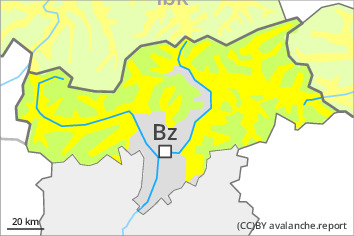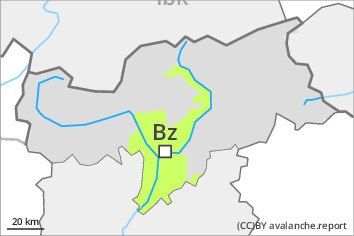
Danger level
 | 2400m |
|  |
|  |

Wet and gliding avalanches are the main danger.
As the penetration by moisture increases individual wet and gliding avalanches are possible. This applies especially in case of releases originating from extremely steep, sunny starting zones below approximately 2400 m that still retain some snow. In steep gullies in particular the wet avalanches can in very isolated cases reach areas without any snow cover.
Wind slabs can be released in isolated cases in particular on extremely steep shady slopes. Avalanche prone locations are to be found in particular in gullies and bowls, and behind abrupt changes in the terrain, in particular at high altitudes and in high Alpine regions. Mostly avalanches are small. Restraint should be exercised because avalanches can sweep people along and give rise to falls. In very isolated cases dry avalanches can also be released in the old snowpack. Avalanche prone locations are to be found in particular in little used terrain above approximately 2400 m, especially on very steep shady slopes.
Snowpack
dp.2: gliding snow
dp.10: springtime scenario
Some rain has fallen in particular in the north. The high humditiy gave rise on Saturday to increasing and thorough wetting of the snowpack over a wide area below approximately 2400 m. A partly overcast night. The surface of the snowpack will only just freeze and will soften quickly, especially on very steep sunny slopes below approximately 2400 m. These weather conditions will give rise to increasing softening of the snowpack.
The snowpack will be subject to considerable local variations at high altitude. Above approximately 2400 m: In near-surface layers, there are multiple melt-freeze crusts sandwiches with faceted layers in between. These layers can still be occasionally triggered, although the thickness of the slab is usually thin. Towards its base, the snowpack is stable.
At low and intermediate altitudes only a little snow is lying.
Tendency
As a consequence of a moderate to strong northwesterly wind, sometimes avalanche prone wind slabs will form. Some snow will fall in particular in the northwest.


